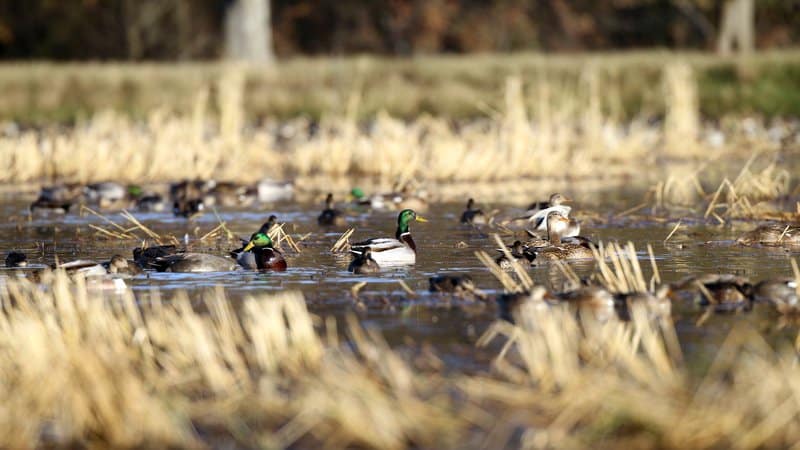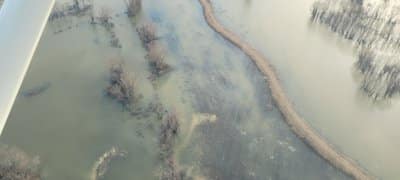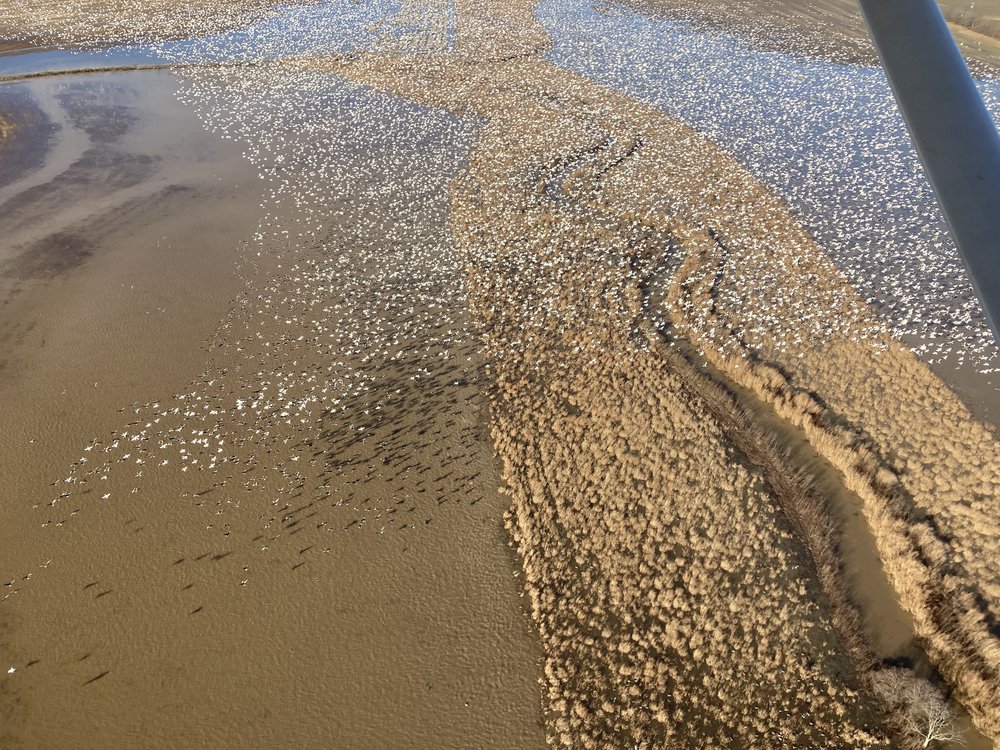Arkansas aerial waterfowl surveys top 4-year trend
ON 01-11-2023

Jan. 11, 2023
Randy Zellers
Assistant Chief of Communications
According to the annual midwinter waterfowl survey, the number of mallards in the Delta region of Arkansas hit a four-year high during aerial observations conducted in early January.
The aerial survey took place after the influx of arctic air in late December and in conjunction with the massive amounts of rainfall during the survey period, Jan. 2-5. Observers estimated 929,248 mallards and more than 1.74 million total ducks on transect lines in east Arkansas. Not only was this the highest mallard population recorded during the midwinter survey since 2018, it was the second-highest since 2010. Total duck population estimates also exceeded 1.5 million for the first time in any survey since December 2011.
The highest mallard and total duck estimates were in the Lower St. Francis survey zone, a region known for more boom-or-bust duck counts driven by the extent of natural flooding on the landscape. Hotspot maps indicate several duck concentration areas throughout the Delta.
Arctic goose population estimates totaled 1,693,343 light (lesser snow and Ross’s) geese and 618,925 greater white-fronted geese in the Delta as well.

“The timing of the surveys fell right in line with flooding from the massive storm front that came through Arkansas, and hunters know that ducks have an innate ability to find newly flooded areas and make use of the new habitat and food,” said Luke Naylor, chief of wildlife management for the Arkansas Game and Fish Commission. “Information from locations north of Arkansas suggested ducks had headed south prior to this event and no doubt found abundant new habitat to settle into across the state.”
Other portions of the state saw variable numbers of ducks, with the Arkansas River Valley recording populations near the long-term average for the midwinter survey and southwestern Arkansas having lower than normal duck populations. The Delta’s rich habitat seemed to be the focus of the waterfowl. Biologists flying along survey routes in the Arkansas River Valley recorded 41,017 total ducks, including 25,943 mallards. Biologists performing cruise surveys in southwest Arkansas reported an estimated 14,283 ducks with 6,180 mallards.
Naylor says improved duck production across the Prairie Pothole Region in 2022 may have contributed to higher midcontinent mallard fall flights and some of the Delta estimate increases, but post-season analysis of duck wings submitted by hunters will be needed to provide insight on the amount of hatch-year birds in the 2022 fall flight.

According to Naylor, the flights for these surveys are conducted at very low elevations, where dangerous situations can arise due to birds flying into the path of the plane if they become spooked. At least one bird strike was recorded during the flights in early January but luckily no one was injured.
“I want to thank our biologists Jason Carbaugh, Jason Jackson, Cameron Tatom and Alex Zachary, as well as the pilots who conduct these low-level surveys for our monitoring efforts,” Naylor said. “They have faced some tough conditions this year with delayed surveys from weather conditions and dodging birds, but have done an excellent job of keeping the data as consistent as possible to make accurate evaluations of duck populations so far this season.”
Complete aerial survey results are available at www.agfc.com/en/hunting/migratory-birds/waterfowl/waterfowl-surveys/
Recent News

Arkansas Wildlife Weekly Fishing Report
Jul. 10, 2025

Lonoke aquaculturist named to AGFC
Jul. 10, 2025
Subscribe to Our Weekly Newsletter E-mails
Don’t miss another issue. Sign up now to receive the AGFC Wildlife Weekly Newsletter in your mailbox every Wednesday afternoon (Waterfowl Reports are published weekly during waterfowl season and periodically outside the season). Fishing Reports arrive on Thursdays. Fill in the following fields and hit submit. Thanks, and welcome!
